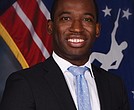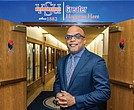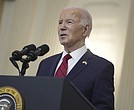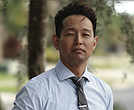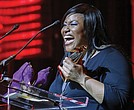RPS scores in lower grades show decline
Holly Rodriguez | 12/1/2022, 6 p.m.
The latest student test scores reported at the Richmond Public School Board meeting last week contained more bad news.
This time, data shows the district’s youngest students in kindergarten through second grade are struggling with academically.
Standards of Learning tests are administered to students in grades three through five, then through middle and high school, to determine student retention of subjects taught. PALS is an early literacy assessment developed by the state and given in the fall and spring of each school year for students in kindergarten through second grade.
While student gains were emphasized during last week’s school board presentation, as of this past spring, RPS student scores in grades K-2 are 8-15 percentage points below where they were in the fall of the 2017-2018 school year.
Grade-to-grade, the percentage of students meeting the standards gets worse as students advance to the next grade. Test score results this fall show 64 percent of kindergartners meet assessment standards, while just 54 percent of first graders and 39 percent of second graders meet those standards.
Fall scores from the 2019-2020 school year compared with this past fall’s scores show:
• When student literacy percentages are broken down by groups — Black, White, Laitnx, economically disadvantaged, English learners, and students with disabilities, almost every group shows declines with two exceptions: Students with disabilities, who have improved by one percentage point, and White students whose scores remain unchanged.
• The biggest decline is in scores rests with economically disadvantaged students, who dropped from 59 percent in 2019-2020 to 41 percent this past fall.
Superintendent Jason Kamras’ team attributes the results to “the myriad direct impacts of COVID on students’ physical and mental health,” causing “a devastating impact on student learning.”
Several ideas were discussed to address the problem and help students improve.
Cheryl Burke, 7th District, said knowing where student literacy stands before they get to kindergarten is a necessary step. “A pre-K assessment is necessary or we are always chasing failure, trying to make up,” she said.
Several other board members mentioned adding 20 more school days to the school year for the elementary schools with students who are struggling the most.
“There’s no substitute for time [in the classroom],” Jonathan Young, 4th District, said in an interview with the Richmond Free Press. “It’s a real opportunity to move the needle forward by providing four additional weeks of instruction for elementary schools that opt in.”
He was adamant that the additional school days cannot mirror the typical school day, however, and could serve as a pilot to a change in how RPS classrooms are run during the regular school year.
“What that looks like,” he said, “is small groups that are literacy-focused; a classroom that provides sensory op- portunities, time out of the classroom in the form of field trips and such.”
He said he already has seen this kind of classroom environment at RPS’ River City Middle School, which participates in the NextUp RVA after school program.
“One classroom was making pizzas, another was playing Laser Tag, another building robots, and the students were enthused, engaged,” he said. “I asked four students why they enjoyed NextUp and they said ‘because it is not like a regular school day’.”


